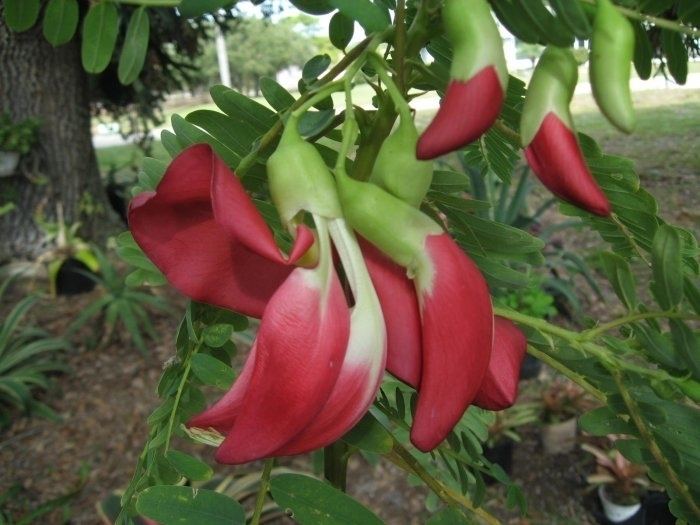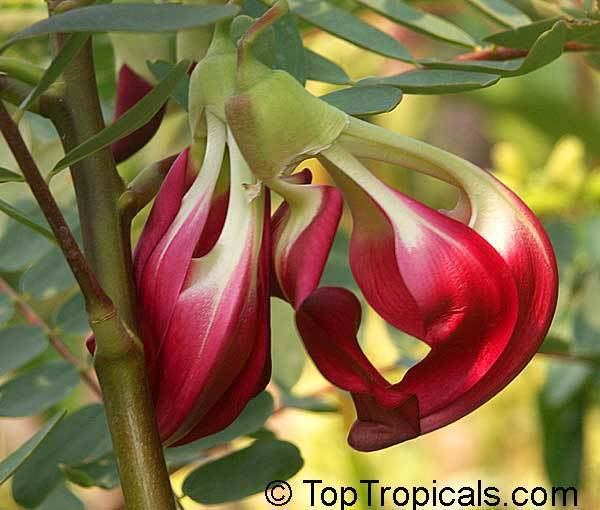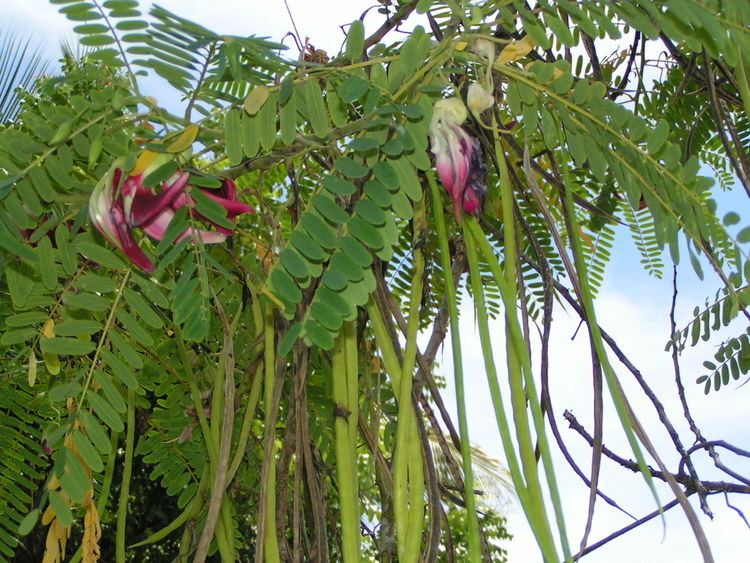Genus Sesbania Rank Species | ||
 | ||
Similar Acacia, Acacia mangium, Parkia speciosa | ||
Sesbania grandiflora avisa
Sesbania grandiflora (syn. Aeschynomene grandiflora, Agati grandiflora), commonly known as vegetable hummingbird, agati or hummingbird tree, is a small tree in the genus Sesbania.
Contents

Description

It is a fast-growing tree. The leaves are regular and rounded and the flowers white or red. The fruits look like flat, long, thin green beans. The tree thrives under full exposure to sunshine and is extremely frost sensitive.

It is a small soft wooded tree up to 3–8 m tall. Leaves are 15–30 cm long, with leaflets in 10–20 pairs or more and an odd one. Flowers are oblong, 1.5–10 cm long in lax, 2–4 flower racemes. The calyx is campanulate and shallowly 2-lipped. Pods are slender, falcate or straight, and 30–45 cm long, with a thick suture and approximately 30 seeds 8 mm in size.
Origin and distribution

It is indigenous from Malaysia to North Australia, and is cultivated in many parts of India and Sri Lanka. It has many traditional uses. It grows where there is good soil and a hot, humid climate.
Medicinal uses

The leaf extract may inhibit the formation of advanced glycation end-products. The leaf extract contains linolenic acid and aspartic acid, which were found to be the major compounds responsible for the anti-glycation potential of the leaf extract.
Culinary uses
The flowers of S. grandiflora are eaten as a vegetable in Southeast Asia, including Laos, Thailand, Java in Indonesia, Vietnam, and the Ilocos Region of the Philippines.
In the Thai language, the flowers are called ดอกแค (dok khae) and are used in the cuisine both cooked in curries, such as kaeng som and kaeng khae, and raw in nam phrik.
The young pods are also eaten. In Sri Lanka, agati leaves, known as Katuru murunga in Sinhala language, are sometimes added to sudhu hodhi or white curry, a widely eaten, thin coconut gravy, and are believed locally to be a cure for canker sores. In India this plant is known as agati (Tamil), agastya (Kannada), agise (Telugu), and both the leaves and the flowers have culinary uses.
